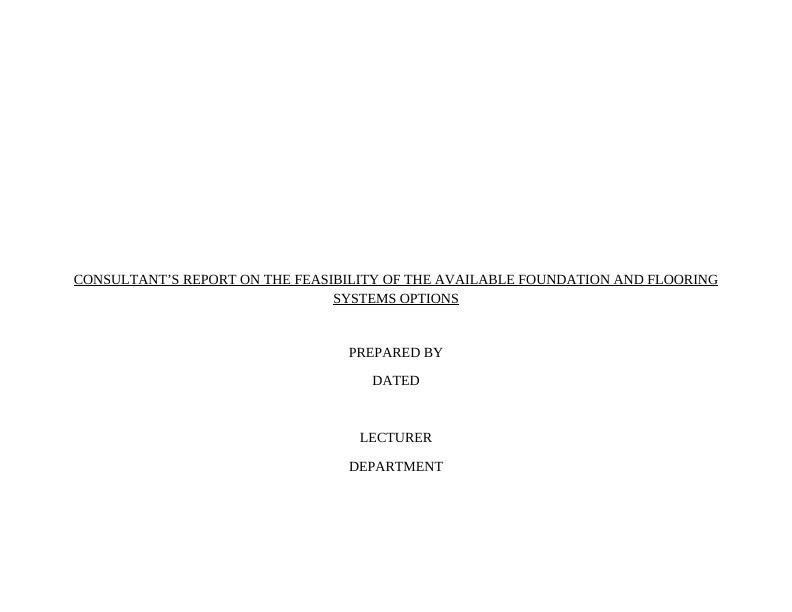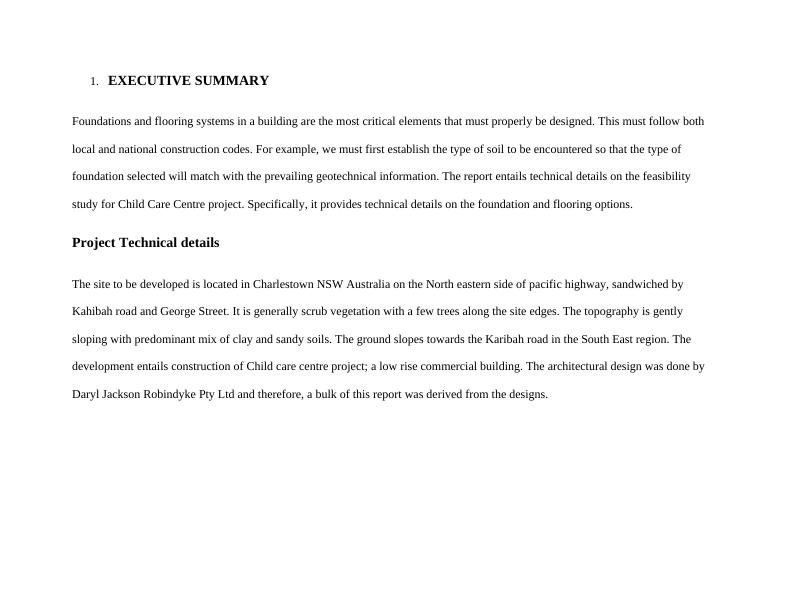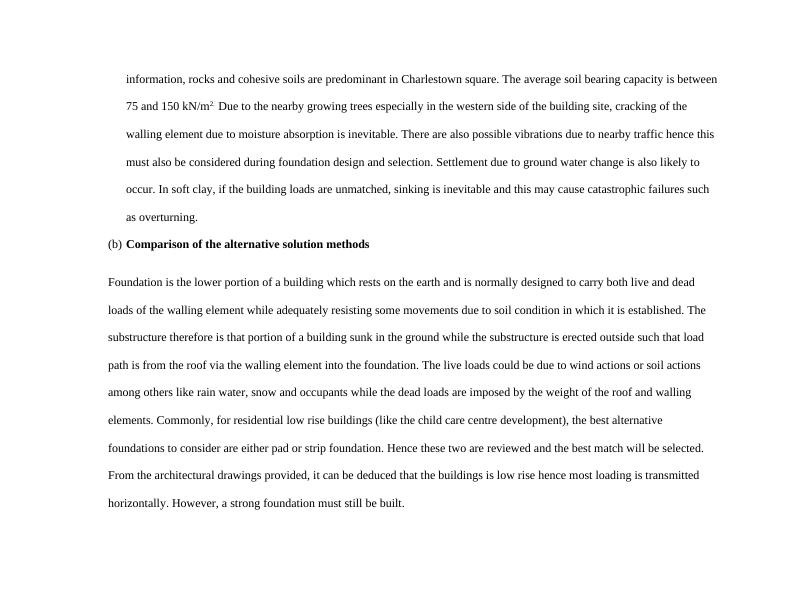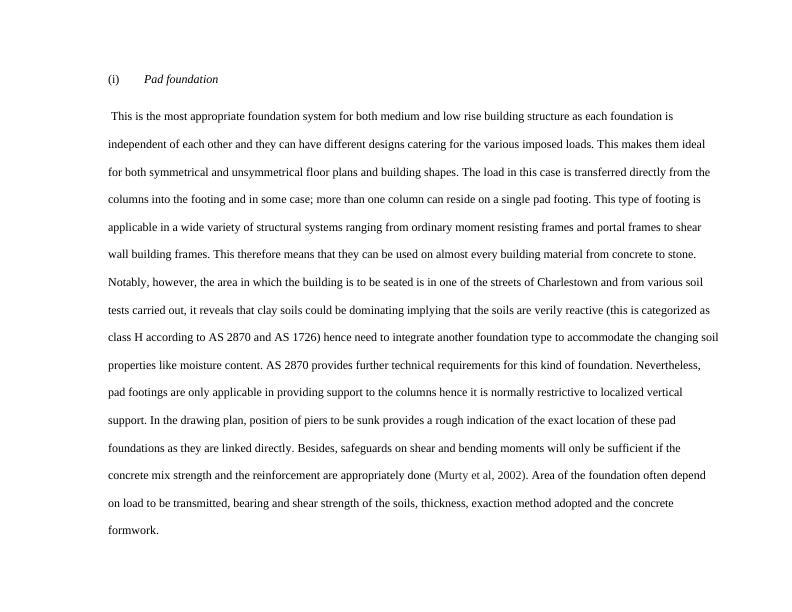Feasibility of Foundation and Flooring Systems for Child Care Centre Project
Construction techniques report on the proposed redevelopment of Charles town Square, including identification of building elements, construction method options, and a feasibility study for the client.
21 Pages1893 Words356 Views
Added on 2023-06-08
About This Document
This report provides technical details on the feasibility study for Child Care Centre project. Specifically, it provides technical details on the foundation and flooring options. The best foundation that matches the site conditions and the planned development is pad foundation. Flooring system to be used in this case should be the composite system as it greatly matches with the site conditions and the building design.
Feasibility of Foundation and Flooring Systems for Child Care Centre Project
Construction techniques report on the proposed redevelopment of Charles town Square, including identification of building elements, construction method options, and a feasibility study for the client.
Added on 2023-06-08
ShareRelated Documents
End of preview
Want to access all the pages? Upload your documents or become a member.
Soil Mechanics | Project Report
|33
|4085
|13
Research Design and Methods - Doc
|20
|3238
|42
Sittingbourne Footing System Assignment
|27
|1880
|48
Assignment On Determine Ultimate Soil Capacity
|6
|1080
|15
Structural Principles for Commercial Low Rise Construction
|10
|1295
|112






